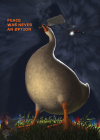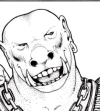opaopajr
Legendary Pubber
- Joined
- May 4, 2017
- Messages
- 2,344
- Reaction score
- 4,169
The "correct answer" is shooting for the happy probability of 66% to around 80% so that people have the reliability to feel capable with the attendant potential for failure to feel challenged. The 2/3 to 4/5 success is roughly the psychological happy place. And -- unless you are actually doing something interesting with the individual values between (like rarity in a Random Encounter Table Curve) -- a flat, A-line, and parabolic curves distribution doesn't matter in a pass/fail test because all passing values are cumulative in its probability, not isolated; reliably cresting the saddle point is good psychologically, but given you are not testing that in a pass/fail it is extraneous.
In BRPs or CoC, from experience, I automatically have pre-gens cluster the 2-3 core skills and at least 2 combat skills start with that focus around 65% to 75% (13 to 15 on a d20). They may build and diversify points elsewhere, even build up skills over time, but at least they have a core that scratches the itch straight outta the box. Third of the time whiffing is just enough failure to relate stress and challenge without people checking out tout de suite.
Psychologically this works the same with almost all games, rpgs no exception. That's why I can go back to White Wolf stuff, for example, and gladly let people run lower level dots because dropping the Rule of One Botch, and allowing adjustable difficulty (so not just successes on 6+), really means you only need two dice to assure a reasonable success on most things. This is important because it then opens dice pool division for everybody, and you are not risking Rule of One implosions in focusing fire.
It's also how you can break down a lot of other games where they try David Lettermen (tm) Stupid Dice Tricks that hide the probability. Once you know the psychological happy place, decode the hidden probability, then chargen for that happy place, put out pre-gens for your players, watch them feel satisfied. Then you know you can sprinkle GM adjusted mods plus or minus within 30% (+ or - up to a 6 mod on a d20) for most campaign challenges, and slide that scale up as necessary for super-heroic.
No sense loading the happy place at the moment with GM mod dependency while PCs are very, very low %. Front load that shit, even at the expense at minutiae customization. Just adjust the game so it works outta the gate without your players' confused on how to be reliable and end up feeling incapable. You are capable in these few things, iffy in much else, and that's it -- the rest you rely upon others and work up a skill or two over time.
When you get players better in probability, system chargen, or savoring risk and failure, you can then open up the table. Their mastery and expectations are broader to withstand different expectations. Until then no sense increasing your GM workload for every case by case basis.
 Yes, I can be a lazy GM.
Yes, I can be a lazy GM.
In BRPs or CoC, from experience, I automatically have pre-gens cluster the 2-3 core skills and at least 2 combat skills start with that focus around 65% to 75% (13 to 15 on a d20). They may build and diversify points elsewhere, even build up skills over time, but at least they have a core that scratches the itch straight outta the box. Third of the time whiffing is just enough failure to relate stress and challenge without people checking out tout de suite.
Psychologically this works the same with almost all games, rpgs no exception. That's why I can go back to White Wolf stuff, for example, and gladly let people run lower level dots because dropping the Rule of One Botch, and allowing adjustable difficulty (so not just successes on 6+), really means you only need two dice to assure a reasonable success on most things. This is important because it then opens dice pool division for everybody, and you are not risking Rule of One implosions in focusing fire.
It's also how you can break down a lot of other games where they try David Lettermen (tm) Stupid Dice Tricks that hide the probability. Once you know the psychological happy place, decode the hidden probability, then chargen for that happy place, put out pre-gens for your players, watch them feel satisfied. Then you know you can sprinkle GM adjusted mods plus or minus within 30% (+ or - up to a 6 mod on a d20) for most campaign challenges, and slide that scale up as necessary for super-heroic.
No sense loading the happy place at the moment with GM mod dependency while PCs are very, very low %. Front load that shit, even at the expense at minutiae customization. Just adjust the game so it works outta the gate without your players' confused on how to be reliable and end up feeling incapable. You are capable in these few things, iffy in much else, and that's it -- the rest you rely upon others and work up a skill or two over time.
When you get players better in probability, system chargen, or savoring risk and failure, you can then open up the table. Their mastery and expectations are broader to withstand different expectations. Until then no sense increasing your GM workload for every case by case basis.

 Yes, I can be a lazy GM.
Yes, I can be a lazy GM.


 Listen to the casinos and their business, then add a smidgen more because you are not GMing for profit.
Listen to the casinos and their business, then add a smidgen more because you are not GMing for profit. 



 Get em!!!
Get em!!!
 ? Where a brand new character has at least 40-to-60 in most skills?
? Where a brand new character has at least 40-to-60 in most skills?
 !
! .
.



